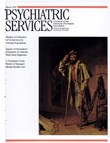Long-term course of substance use disorders among patients with severe mental illness
Abstract
OBJECTIVE: This study assessed the long-term course of substance abuse and dependence among severely mentally ill patients. METHODS: A prospective, naturalistic, seven-year follow-up of severely mentally ill outpatients (most with schizophrenia and schizoaffective disorder) successfully located and reassessed 79.1 percent (N = 148) of the patients from the original study group. The follow-up study group was assessed for alcohol and drug use at baseline and seven-year follow-up by their case manager or primary clinician using the Case Manager Rating Scale (CMRS) for the assessment of substance-related problems among severely mentally ill patients. RESULTS: The prevalence of active substance use disorder changed little from baseline to follow-up. Alcohol abuse or dependence was present in 24 percent of the patients at baseline and 21 percent at follow-up, and drug abuse or dependence was present in 20 percent at baseline and 17 percent at follow-up. However, those with initial alcohol abuse had a higher rate of remission (67 percent) than those with initial alcohol dependence (33 percent). Similarly, those with initial drug abuse had a higher rate of remission (54 percent) than those with initial drug dependence (31 percent). CONCLUSIONS: The higher rates of change for those with initial substance abuse compared with substance dependence suggest that distinguishing between abuse and dependence may have important implications for assessment and prognosis of individuals with a dual diagnosis of a substance use disorder and severe mental illness.
Access content
To read the fulltext, please use one of the options below to sign in or purchase access.- Personal login
- Institutional Login
- Sign in via OpenAthens
- Register for access
-
Please login/register if you wish to pair your device and check access availability.
Not a subscriber?
PsychiatryOnline subscription options offer access to the DSM-5 library, books, journals, CME, and patient resources. This all-in-one virtual library provides psychiatrists and mental health professionals with key resources for diagnosis, treatment, research, and professional development.
Need more help? PsychiatryOnline Customer Service may be reached by emailing [email protected] or by calling 800-368-5777 (in the U.S.) or 703-907-7322 (outside the U.S.).



